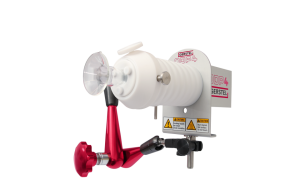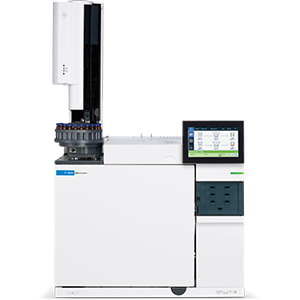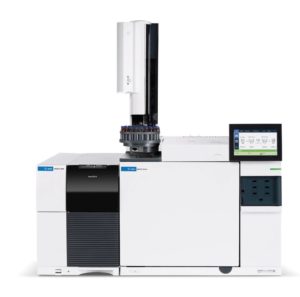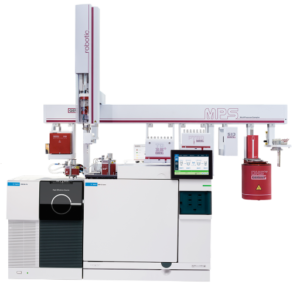ODI software enables fast and reliable evaluation of olfactory information including identification of unknown odor-active compounds.
Chromatography data is typically acquired using a mass spectrometer / mass selective detector (MSD), a Flame Ionization Detector (FID) or a Sulfur Chemiluminescence Dectector (SCD) or a combination thereof. The chromatogram is loaded into the ODI software, which automatically recognizes the chromatogram data format before importing the data. In parallel, an olfactogram is imported with information provided by the user as he or she assessed odors eluting from the GC column in parallel with the detection process during the GC run. The olfactogram combines spoken comments from the sensory analyst and the registered intensities along a time axis. The „Olfactory Intensity Device“ (OID) conveniently enables the user to indicate the intensity of the olfactory impression as it transpires. Text comments are added using voice recognition software to translate spoken descriptors. The combined information is presented in the ODI-Software in a clear and concise overview including a chromatogram, an olfactogram and a table.
In addition, the detailed report of the signals registered during olfactory detection at the sniff port also includes important parameters such as retention time (RT) and retention index (RI) as well as NIST library search results for compound identification. The audio file with descriptors is stored for later evaluation, as needed. If changes to the initial impression have been realized, the text comments can be edited. Regarding the MS data, results from database searched can be aligned with Retention indices (RIs) calculated by the ODI Software.
To evaluate olfactory information and determine the identity of a critical or key odor active compound or compounds that result in an olfactory impression, the Olfactory Data Interpreter (ODI) provides the analyst with several helpful software features and functions.
Cumulative Olfactogram presentation
When a sample is evaluated in multiple dilutions using Olfactory GC (GC-O), the resulting olfactograms are conveniently combined and presented in cumulated form: The ODI software adds the respective odor intensities and displays the cumulative value. Substances that are still above the odor threshold in the highest dilution will be represented with the highest values in the cumulative olfactogram. The cumulative olfactogram function is a simple yet efficient tool that instantly provides the odor analyst with reliable information as to which compounds belong to the group of more potent odor active compounds that influence the flavor or odor impression even at very low concentrations.
Aroma Extract Dilution Analysis (AEDA)
The ODI Software enables efficient evaluation of classical Aroma Extract Dilution Analysis (AEDA) with defined dilution factor (Flavor Dilution, FD). The ODI software performs all calculations and determines the FD value, which is a measure of the intensity of an odor active compound within a mixture. The software transfers the established value to a ready to print report. The AEDA report provides the sensory analyst a tool for simpler and more efficient evaluation of panel data.
Sensory Panel Analysis
If a sample undergoes olfactory evaluation by a sensory panel, the resulting data will show how many panel members perceive a given impression or compound. This information can be very helpful as a supplement to GC-O data or to correct GC-O data, as well as for further analysis and aroma identification. Manually generated reporting can be both cumbersome and labor intensive, requiring a lot of time. The Olfactory Data Interpreter helps to perform the panel analysis evaluation by mouse-click and delivers the detection frequency of each compound without delay.
MS Library Search
The ODI Software integrates numerous functions relating to extraction, clean-up and interpretation of mass spectra. Spectral recognition is performed using existing libraries; various data formats can be used. The GERSTEL Application Laboratories recommend the NIST-AMDIS software, which is coupled directly to the ODI Software enabling efficient and convenient compound identification and spectral deconvolution of co-eluting compounds.
Multivariate Data Analysis
In order to perform rapid classification of a large number of samples based on olfactory data, the ODI Software is offered with a Multivariate Data Analysis option based on Principal Component Analysis (PCA). The software helps to quickly and efficiently solve odor riddles and identify unknown compounds found in GC/O analysis. When it comes to GC/O data handling and data processing, the GERSTEL ODI offers the tolerance range and flexibility required in order to efficiently navigate the uncertainties of olfactory analysis and to reach not just an answer, but the correct answer.







